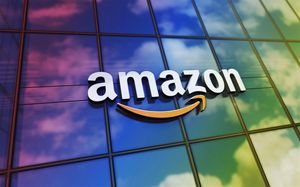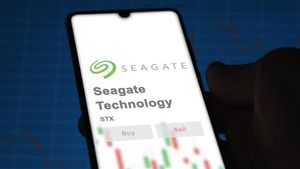
The U.S. labor market finds itself in a peculiar state, characterized by a "curious balance" where a stable unemployment rate belies a significant slowdown in job creation. While the headline unemployment figure remains relatively low, a marked deceleration in nonfarm payroll growth, coupled with a cooling in both labor supply and demand, has economists, including Federal Reserve Chair Jerome Powell, warning of rising downside risks to employment. This delicate equilibrium suggests that the market's apparent resilience might be more fragile than it appears, with potential implications for economic stability and corporate performance.
A Precarious Balance: What Happened and Why It Matters
The current state of the U.S. labor market is a study in contrasts. As of July 2025, the unemployment rate stood at 4.2 percent, a slight uptick from 4.1 percent in June, yet broadly stable within a narrow range over the past year. However, beneath this seemingly benign surface, the engine of job creation has significantly decelerated. In July, the U.S. economy added a mere 73,000 jobs, falling considerably short of the 115,000 consensus expectation. This figure is further compounded by substantial downward revisions to May and June's job numbers, collectively reducing the previously reported gains by 258,000. The average monthly job growth over the three months ending in July plummeted to just 35,000, a stark contrast to the 168,000 jobs per month averaged in 2024.
This slowdown is not merely a blip but a trend that Federal Reserve Chair Jerome Powell has termed a "curious kind of balance." This equilibrium arises from a simultaneous cooling in both the supply of and demand for workers. Labor supply has been constrained by factors such as a sharp decline in immigration and a recent dip in the labor force participation rate. Concurrently, the demand for labor has also softened, as evidenced by the reduced pace of hiring across U.S. companies. While this dual slowdown has kept the unemployment rate from spiking, it creates an unusual and potentially unstable situation. Economists are increasingly concerned that this "unusual situation suggests that downside risks to employment are rising," with the potential for a rapid increase in layoffs and a subsequent surge in unemployment.
Navigating the Shifting Sands: Potential Winners and Losers
In a labor market characterized by slowing growth and rising risks, the landscape for public companies is shifting, creating both potential winners and losers. Companies that have struggled with persistent labor shortages in recent years, particularly in sectors like hospitality, healthcare, and manufacturing, might find some relief as the labor pool loosens. A less competitive hiring environment could lead to lower wage growth pressures, potentially boosting profit margins for businesses that rely heavily on human capital. Furthermore, companies that have proactively invested in automation and artificial intelligence (AI) could emerge as winners, as these technologies become even more critical for maintaining efficiency and productivity in a decelerating economy. For instance, technology firms specializing in AI solutions, such as NVIDIA (NASDAQ: NVDA) or Microsoft (NASDAQ: MSFT), could see increased demand for their products as businesses seek to optimize operations and reduce reliance on human labor for routine tasks.
Conversely, companies heavily reliant on robust consumer spending are likely to face headwinds. A weakening job market, coupled with rising long-term unemployment and challenges for new entrants, could dampen consumer confidence and discretionary spending. Retailers, particularly those in non-essential goods, and companies in the travel and leisure sectors, could experience reduced demand. Furthermore, businesses that have not adapted to the changing labor dynamics, particularly those with high exposure to entry-level roles that are increasingly susceptible to automation, may struggle to remain competitive. The surge in long-term unemployment and the difficulties faced by young workers also point to a broader societal challenge that could impact the overall economic health, indirectly affecting a wide range of businesses. Companies with significant exposure to the gig economy, for example, might also see a contraction in their labor supply as workers seek more stable employment options.
Broader Implications: Industry Impact and Economic Ripple Effects
The "curious balance" in the U.S. labor market is not an isolated phenomenon but rather a critical indicator of broader economic trends and potential ripple effects across industries. The deceleration in hiring aligns with other signs of a weakening U.S. economy, including slower consumer spending and businesses drawing down inventories. Gross Domestic Product (GDP) growth has notably slowed in the first half of 2025 to 1.2 percent, roughly half the 2.5 percent pace observed in 2024. This broader economic slowdown creates a challenging environment for nearly all sectors, as reduced demand and increased uncertainty can stifle investment and expansion.
Beyond the headline numbers, several underlying trends paint a more concerning picture. Other measures of labor market health, such as quits, layoffs, the ratio of vacancies to unemployment, and nominal wage growth, have all softened modestly, indicating a broader cooling. A particularly troubling development is the surge in long-term unemployment, with approximately 1.8 million Americans jobless for 27 weeks or more in July 2025, representing over 25 percent of all unemployed workers. This marks a substantial increase and suggests a growing segment of the population struggling to re-enter the workforce. Young workers, including recent college and high school graduates, are also facing a particularly difficult job market, partly due to companies limiting entry-level roles and the increasing adoption of artificial intelligence replacing traditional "starter" jobs. The potential for higher tariffs to contribute to increased prices in certain goods categories could further squeeze real incomes and consumer spending, reinforcing the economic slowdown. Historically, periods of such a delicate labor market balance have often preceded more significant economic downturns, raising concerns about a potential recession.
What Comes Next: Navigating Uncertainty
The path forward for the U.S. labor market is fraught with uncertainty, with both short-term and long-term possibilities demanding close attention. In the immediate future, economists anticipate continued modest nonfarm payroll gains, likely in the range of 60,000 to 80,000 for August, and project a potential rise in the unemployment rate to 4.3 percent. The primary concern is that the current "curious balance" could rapidly unravel, leading to a sharp increase in layoffs and a more pronounced rise in unemployment. This could trigger a more significant economic contraction, potentially pushing the U.S. economy into a recession.
Companies will need to consider strategic pivots to adapt to this evolving landscape. A continued focus on efficiency, automation, and leveraging AI will be paramount to maintain profitability amidst slowing growth. Businesses may also need to re-evaluate their hiring strategies, potentially prioritizing skilled labor and investing in upskilling existing employees rather than relying on a constant influx of new entrants. For investors, this environment presents both challenges and opportunities. Sectors resilient to economic downturns, such as utilities and consumer staples, might offer relative stability. Conversely, market opportunities could emerge in companies providing solutions for automation and productivity enhancement. The Federal Reserve's monetary policy will also be a critical factor, as any further tightening could exacerbate the labor market's vulnerabilities.
Conclusion: A Precarious Equilibrium Demands Vigilance
The U.S. labor market's current state of "curious balance" represents a critical juncture for the economy. While the unemployment rate has remained stable, the significant slowdown in job creation and the underlying shifts in labor supply and demand signal rising downside risks. The surge in long-term unemployment and the challenges faced by new entrants underscore the fragility of this equilibrium and the potential for a more severe economic downturn.
Moving forward, investors, policymakers, and businesses must exercise extreme vigilance. Key indicators to watch in the coming months include the monthly nonfarm payroll reports, the unemployment rate, and any shifts in labor force participation. The Federal Reserve's commentary on the labor market and its implications for monetary policy will also be crucial. The lasting impact of this period will depend on how quickly and effectively the economy can adapt to these evolving dynamics, and whether the "curious balance" can transition into a more sustainable and robust growth trajectory, or if it will ultimately give way to a more challenging employment landscape.






